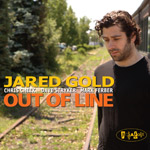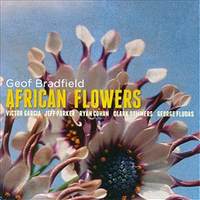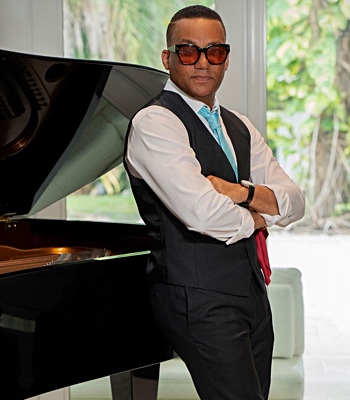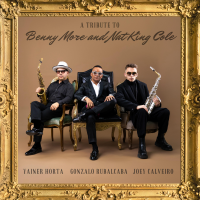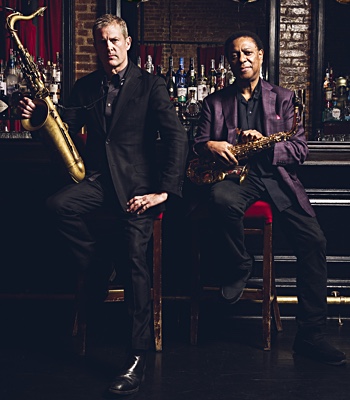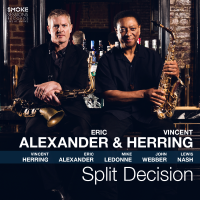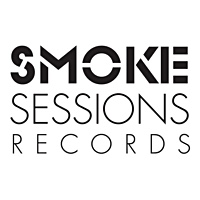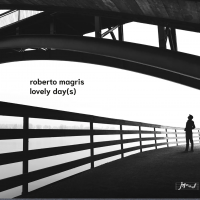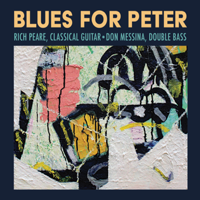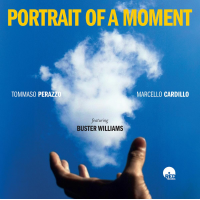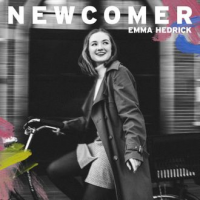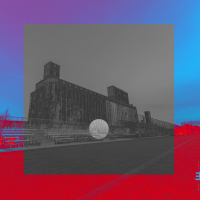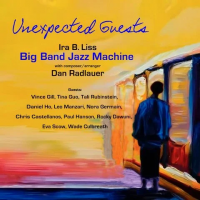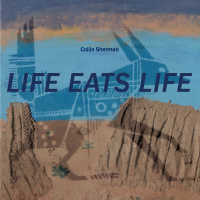Home » Jazz Articles » Extended Analysis » Charles Lloyd: Charles Lloyd Quartet: Mirror
Charles Lloyd: Charles Lloyd Quartet: Mirror
 Charles Lloyd Quartet
Charles Lloyd QuartetMirror
ECM Records
2010
The perception of Charles Lloyd has changed since he first rose to popularity as a 1960s-saxman, sporting flower power colors and a momentous afro, and was somehow tied to mainstream jazz, the avant-garde and the popular psychedelic movement. A brief recess from recording, during which he taught transcendental meditation, ended with his return to recording and performance in the 1980s, and subsequent transformation into one of today's elder statesmen of jazz. Yet over all the years, little has changed within his playing, save for perhaps the logical refinement of tone and voice that can only be expected from a master player.
Certainly Lloyd has the same eye for talent. His current quartet features one of the phenoms of jazz at every chair, with virtuoso pianist Jason Moran, polyrhythmic drums wunderkind Eric Harland, and the poised and powerful bassist Reuben Rogers. All three are in their thirties and among the best on their respective instruments. Meanwhile Lloyd himself more than leads at a sprightly 72 years. The quartet's debut on the live recording Rabo de Nube (ECM 2008), was a shot of adrenaline, a virtuoso display of instant chemistry and intensity.
Aesthetically, Mirror is an almost completely different experience. It is simultaneously one of the loveliest albums Lloyd has ever presented, and it may be one of the most self-demonstrative albums. Rarely before have so many influences been on display, so many little touches of tribute been levied, all within the transformative format of the sax-led jazz quartet that he has worked in for so long. Indeed, the power of this album, to some contrast with Rabo de Nube, arises from the diversity of experience, as there is a real feeling of journey from track one through 12. The source material is widely varied, painting a picture of loves and influences.
One interesting and immediately arresting facet of the album is Lloyd's use of alto sax. Within his larger musical arsenal, Lloyd's smaller sax doesn't usually get nearly as much play as his taragato and array of flutes. Here, however, it's the only other instrument he breaks out besides his trademark tenor. And the choice pays dividends from the first gorgeous notes of "I Fall in Love Too Easily." His playing on the smaller horn is sweet and lyrical, with a trace of his personal husky rasp mixing alongside something like bluesy exultations of Ornette Coleman. Much like John Coltrane, Lloyd often plays high up on his tenor, giving his sound there an alto-like quality. The first notes of the album make up one of those warm, trademark runs so typical of his larger horn, and it's only as he keeps playing that the grittier sound of his alto becomes clear. In a way, it gives a sense of seeing where his sound on comes from, a theme that carries over to the content of the remaining tracks, all played on tenor.
Gospel has always had a strong pull on Lloyd's music, and its traditional hymns make multiple appearances here. The first of these is a deeply touching and ruminative "Go Down Moses." Moran's playing is nearly minimalist, as Rogers providing exhorting touches of arco bass and Harland plays the drums rims in his inimitable style. Lloyd's tenor adopts a speech-like quality as the music swells to a moment of resolution—not melodramatic, but touching with its subtle, lyrical touches and warm dynamics. By contrast, the version of "Lift Every Voice And Sing" that comes much later, has a fire to it that reaches towards the avant-garde of the 1960s. It swirls in a kind of timeless disconnect, expanding from the soul-touching melody into a rhythm section-fueled cacophony. When Lloyd comes back in, he returns with an intensity that finds him approaching the talking-in-tongues church of Coltrane and Albert Ayler.
He also gives tips of the cap to the jazz tradition, with two Thelonious Monk standards that let Moran, a scholar of the Monk school, craft languorous solos that unfold across those challenging changes with the grace of an opened theater curtain. Much has been made of the fact that Lloyd has seemingly had his pick from the most brilliant and idiosyncratic pianists of the generations, from Keith Jarrett to Bobo Stenson, Brad Mehldau to Geri Allen. Without a doubt, Moran is a worthy successor to the chair. His brain seems able to pour out the ideas of two pianists onto the keyboard, pitting them against each other with the same kind of superhuman poise that lets a grandmaster play a dozen chess games at once. Here, interestingly, he plays with tremendous restraint, allowing those lyrical ideas to expand gradually out upon the keyboard. It's a large reason why this album is often so gentle and so delicately moving.
One of the true showstoppers is an aching version of "La Llorona," derived from the Mexican folk tale-song of a tragic mother condemned to roam forever weeping in search of the children she killed. Moran's solo is a masterpiece, blending folk motifs with little blocks of dissonance to magnify the emotion of the melody. Lloyd's tenor cries out through the upper register in a minor key, as Harland provides a kind of scattered yet persistent march on his snare. There is also some little irony in the fact that this deeply mournful tune is followed by Lloyd's take on those icons of good times and sunny beaches, the Beach Boys.
A longtime resident of Big Sur, Lloyd here pays a kind of homage to his home state by turning "Caroline, No" off the Beach Boys' Pet Sounds (Capitol, 1966) album into a nostalgic ballad. Propelled on Harland's polyrhythms, Lloyd plays Brian Wilson with little vocal inflections that impart a sly impetuousness to his sax. Then there is the sweet, ear-catching soul of "The Water is Wide." The tune is a longtime favorite of Lloyd's, but never before has it sounded as hip as when powered by Rogers' bass, with a sound as fat and hip as anything out of Motown Studios. The grooves he slips into are as natural and alive as a heartbeat.
The second to last track, "Being and Becoming...," is a rolling and timeless modal melody evoking a certain mystical feeling. It starts out with lyrical, almost Jarretian touches from Moran, and expands towards something chaotic. While never truly cacophonous, the band gets wild, with collective improvisation seeming to provide a kind of cathartic release tinged with touches of Indian, Sufi and the persistent feel of gospel. Yet perhaps more revealing is what follows on "Tagi," Lloyd reading from the Bhagavad-Gita over the rubato musings of piano and arco bass, and a deep vocal drone from Harland. It is a pure and honest moment of musical spirituality, akin to Coltrane's saxophone reading of "Psalm" on A Love Supreme (Impulse!, 1964). When Lloyd comes in on his tenor to complete the tune, the sax provides first a reflection of his own words, iterating a melody, before the quartet finds an upbeat, Indian-inspired feeling and rides it happily to the end. The experience reflects much of who Charles Lloyd is and has been. The tone of spirituality, more obvious at some points than at others, remains a persistent theme.
Moreover, there's the sense here, as there was on Lloyd's Lift Every Voice (ECM 2002), of creating a kind of healing music in a time of need. As a whole the tunes themselves are pared back, the tempos cooled and little surprises hidden within the gems of familiar melodies. From one perspective, the album is a self- portrait of Lloyd and his music. From the other, it's a step forward from a great working band that continues to evolve. Regardless, it's a lovely collection of music.
Tracks: I Fall in Love Too Easily (For Lily); Go Down Moses; Desolation Sound; La Llorona; Caroline, No; Monk's Mood; Mirror; Ruby, My Dear; The Water is Wide; Life Every Voice and Sing; Being and Becoming, Road to Dakshineswar With Sangeeta; Tagi.
Personnel: Charles Lloyd: tenor and alto saxophones, voice; Jason Moran: piano; Reuben Rogers: bass; Eric Harland: drums.
Track Listing
I Fall in Love Too Easily (For Lily); Go Down Moses; Desolation Sound; La Llorona; Caroline, No; Monk's Mood; Mirror; Ruby, My Dear; The Water is Wide; Life Every Voice and Sing; Being and Becoming, Road to Dakshineswar With Sangeeta; Tagi.
Personnel
Charles Lloyd
saxophoneCharles Lloyd: tenor and alto saxophones, voice; Jason Moran: piano; Reuben Rogers: bass; Eric Harland: drums.
Album information
Title: Mirror | Year Released: 2010 | Record Label: ECM Records
Tags
Comments
PREVIOUS / NEXT
Charles Lloyd Concerts
Support All About Jazz
 All About Jazz has been a pillar of jazz since 1995, championing it as an art form and, more importantly, supporting the musicians who make it. Our enduring commitment has made "AAJ" one of the most culturally important websites of its kind, read by hundreds of thousands of fans, musicians and industry figures every month.
All About Jazz has been a pillar of jazz since 1995, championing it as an art form and, more importantly, supporting the musicians who make it. Our enduring commitment has made "AAJ" one of the most culturally important websites of its kind, read by hundreds of thousands of fans, musicians and industry figures every month.



